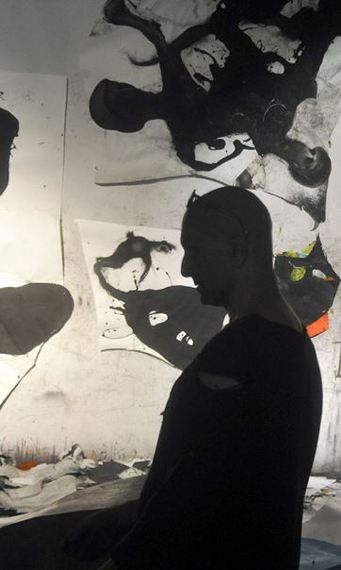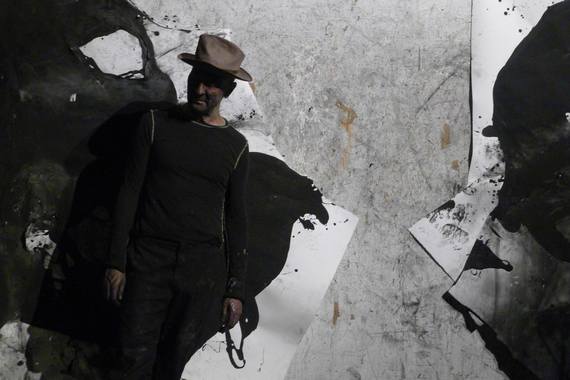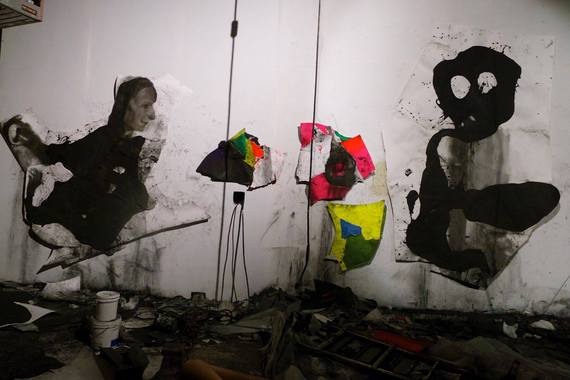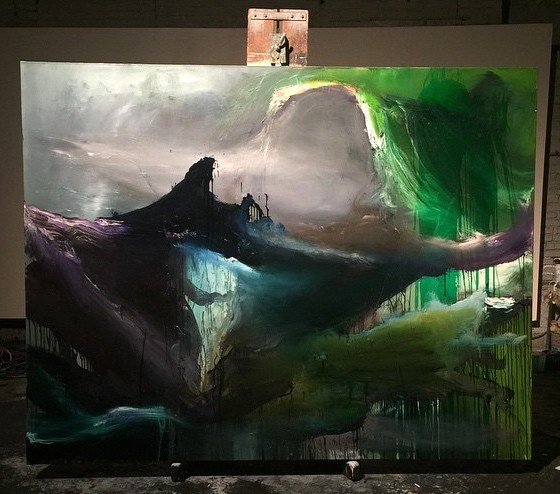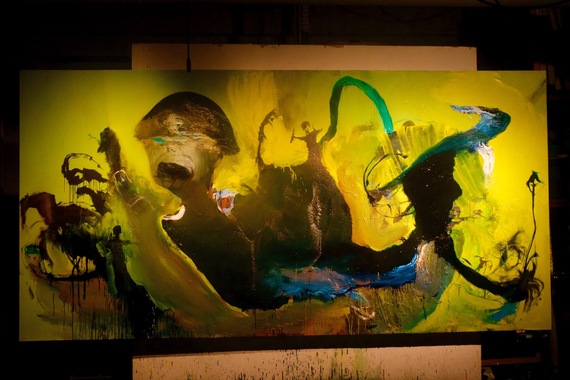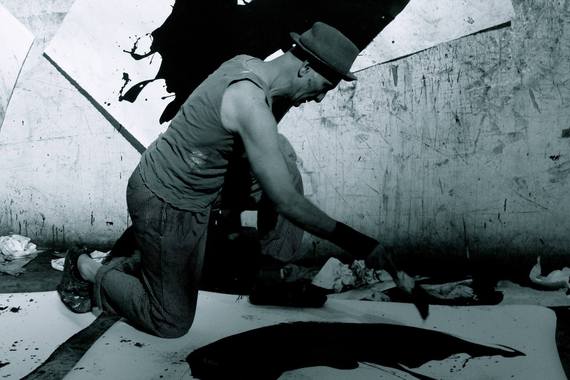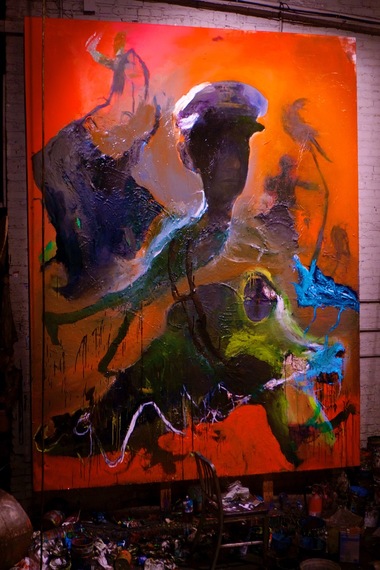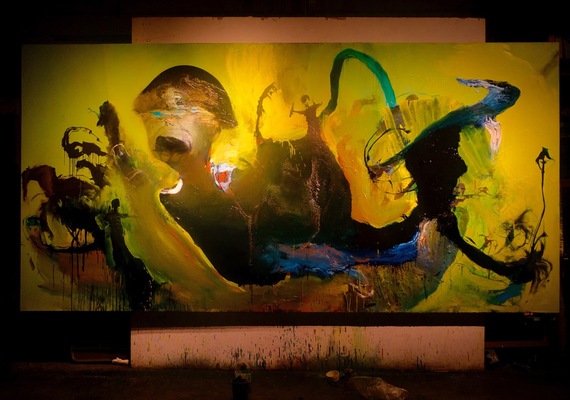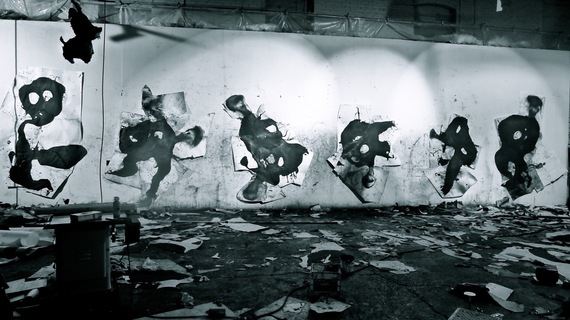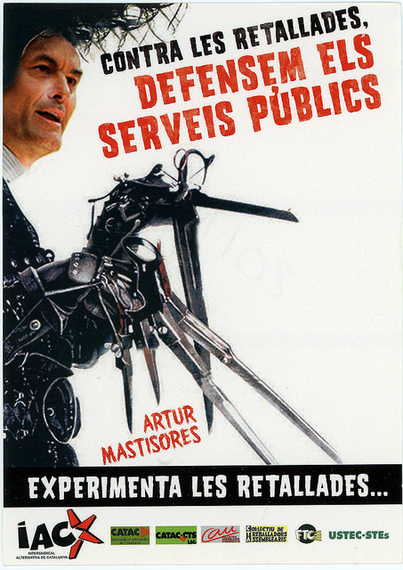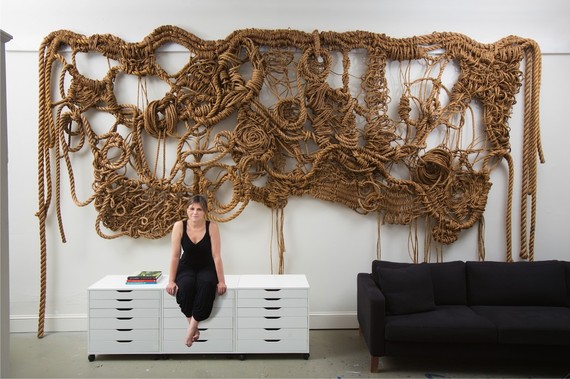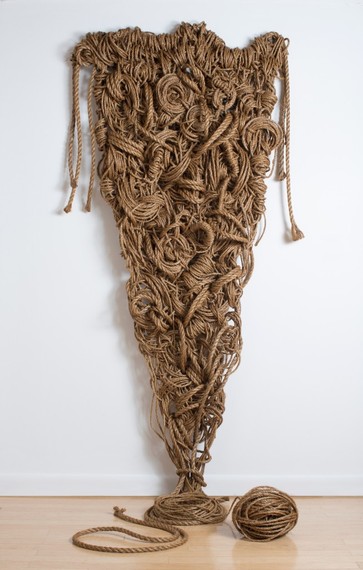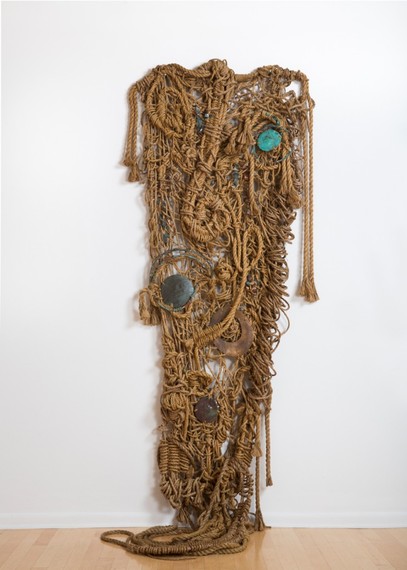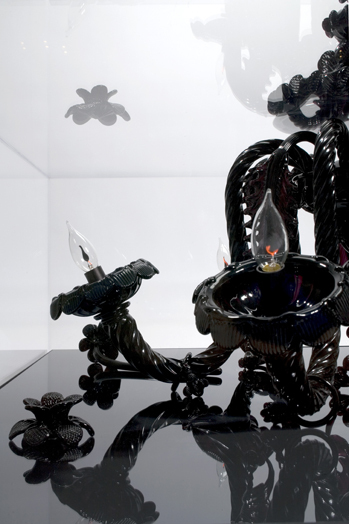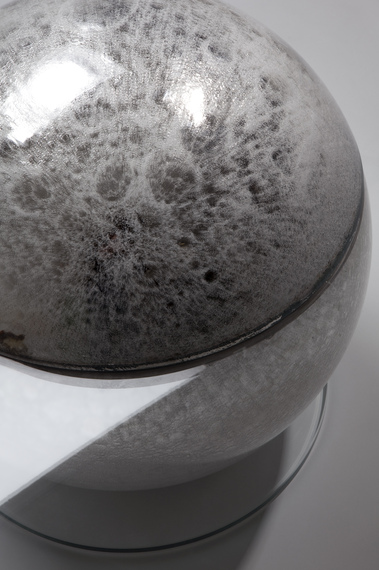Steven Wilson is at it again. The critically acclaimed and über-prolific musician and producer has released his fourth proper solo album. His body of work is beyond impressive, especially when you factor in
the albums he has remixed.
![Steven Wilson]()
His latest effort is a full-fledged concept album.
Hand. Cannot. Erase. is nothing short of an epic tale of modern-day isolation. Wilson wrote the songs from a female perspective, finding inspiration for the concept and story in the fascinating case of
Joyce Carol Vincent -- an attractive woman in the UK who died in her apartment in 2003. While that may not be entirely uncommon, no one missed her for three years -- not her family, nor her friends. (For more on the Vincent story, see the chilling documentary
Dreams of a Life.)
![]()
Here's a snippet of the album:
Wilson's PR team sent me an advanced copy of the album in late January. It's beautiful and haunting. As with many great prog records, there's no shortage of musical layers, instruments and themes.
PS: Today I am very pleased to be joined by one of my favorite musicians, the very talented, the very prolific Mr. Steven Wilson. We are going to talk primarily about his new album Hand. Cannot. Erase. It is in my view not just a great listen but also very important social commentary. Steven, how are you doing today?
I'm very good. Thank you for that very flattering introduction.
PS: Can you talk about Joyce Carol Vincent? When and how did you come to hear of her?
SW: Joyce Carol Vincent was a story about ten years ago in the UK in 2006. She was found dead in her North London flat. Her body had been there for three years undiscovered. That's not the sort of thing you forget in a hurry. That story was kind of very shocking, but it was only when I saw the documentary about her called
Dreams of a Life about three years ago. I began to understand a lot more about Joyce Carol Vincent, and that she was not as I had assumed. I think most people would assume she was not a lonely little old lady. She was quite the opposite. She was a young, attractive and popular woman who potentially had many friends and family. It kind of made the story even more strange, even more shocking, but in a way, I could also understand how something like this could happen. I, myself, lived in London for 20 years and I never knew my next-door neighbors. I never knew what they did. I never knew their names. They didn't know what I did for a living, and they didn't know my name.
I think there's something very peculiar about living in the city and not part of the major metropolis; that actually makes it remarkably easy to disappear. And particularly, if in the case of Joyce Carol Vincent, by choice, if you deliberately kind of erase yourself in a way, it's remarkable to do that. It's easier to that outside of the city where everyone knows everyone else's business. The story of Joyce Carol Vincent for me became they symbol of what it means to be living in the city in the 21
st century in the age of the internet and all this other stuff that supposedly brings us closer together as human beings. But, actually, the way I see it is it actually makes us disconnect more and more from each other.
PS: When you read about Joyce Carol Vincent and you saw that very moving documentary, did you immediately think that her story would serve as the basis for your next album?
SW: There wasn't like a eureka moment, if that's what you mean. No, I think it was more a question of once you've seen that documentary, once you know the story, it's the kind of thing you do carry around with you and it's not easy to forget. It's not easy to brush away to a part in your mind; it stays with you, kind of haunts you. I didn't necessarily say to myself: "OK, great, that's the idea for the next record, that's the story I'm going to write." But, I did carry it around with me. When I came to start writing new music about 18 months ago, I didn't want to be pretentious and say the subject kind of chose me, but there was a sense that this was still kind of rattling around in my mind, and I found myself beginning to write about, not about Joyce Carol Vincent, but about a fictional character which was very much based on her story.
PS: Okay, can you talk a little bit about the meaning of the title, Hand. Cannot. Erase.?
SW: You know what? I'm not going to say so much about that, but I'm going to explain to you why I don't want to tell you too much about the title. For me, giving a title to an album is kind of a necessary evil in a way. You have to give your album a title. But one of the problems with doing that is in a way once you title your album, you are kind of telling them what the story's about, what the album is about. You are telling them this is what the album is about. I could have very easily called this album the
Loneliness of Living in the City or something even much more directly specific about this content of the record. And, of course, that would have been a fair enough title because it is about that, but the point is it's all about many other things, too. In this album there are songs about loneliness, nostalgic of childhood, the internet, 21
st century, isolation, alienation, lots of other things as well, lies and anger, and all these things. They are all in this album, so rather than give it a very specific title, I chose something I thought would be ambiguous. It's still a pleasing title but still leaves things fairly open-ended and leaves it for people to make up their own mind about what the album is and what the album is about. It doesn't have a meaning for me, but I didn't want to be too specific about it.
PS: Okay, that's fair enough. You mentioned some of the tracks, so let's talk about them. "Home Invasion" is a really powerful track in my opinion. Can you talk a little bit about that one and how it came together?
SW: "Home Invasion" is kind of a little bit of a musical journey within itself. I think of the album overall as kind of a musical journey, but that one almost has a musical journey within it. It goes through many different changes. There's a jazz section, and there's funky section, and then there's like a spacey section.
Those kind of songs are the hardest ones to put together for me because it's almost like you're juggling lots of different ideas, lots of different sections and you're trying to find the one way that makes the most logical sense from a listening point of view. I am very happy with the way it came out because it ultimately did come together in a very eying logical way for me. The song itself is about the Internet. It's about this idea of social networking, and it's about this idea that you can in a way redefine yourself and redefine your personality online to project an image of yourself closest to the one you would like, if you see what I mean.
There's a line in there, "Download the life you wish you had." I think there is something about the Internet which gives people almost an opportunity to role play and to create a façade, an image. I see that as quite a dangerous development because I think what we call social networking, Twitter, Facebook, etc., is actually quite antisocial. It's a way for people to have the illusion of communicating with each other, connecting with each other. In fact, in truth is social networking makes it easier to disconnect, to kind of hide behind social networking, Facebook, cell phones, Twitter and all this stuff. It's a song really about that and my concerns about that side of technology in the 21
st century. It connects to my central character.
PS: The female vocals on the album are quite emotive. I was wondering if you could talk about who provided them and how you came to know that person or persons?
SW: Obviously, once I had this idea for the subject matter on the record, and I knew the character would be a female character, straightaway that was a challenge for me. I had to write the lyrics, and write the story, and write the blog and all the stuff that goes with the album from the perspective of a female character. It is something I've never done before.
SW:That was my first challenge, and out of that challenge in a way came this thought: your character is female and you should have a female presence on the record -- not just write through this female character but actually have a female voice literally a female voice on the record.
SW: I have two female voices on the record. First, I have the voice of the British actress who relates the story on "Perfect Life," and then I have this wonderful Israeli singer, Ninet Tayeb. She was recommended to me by my Blackfield colleague Aviv Geffen. We've had a partnership and made a few records together. That was one of three singers actually that auditioned for that particular song which is the key song that the female voice sings. Hers was the voice that literally blew me away. I think I was looking for something specific, and I guess I was looking for my Kate Bush or my Björk -- I didn't want such a generic female voice. I wanted someone who had more of a quirky, powerful quality to her voice, almost have control, and Ninet definitely had that so when I heard her voice I knew she was the one.
PS: You previously alluded to the blog and the website for the album. As you've done with previous records, on this one you included some really beautiful artwork, and extended the story in a way that a simple lyric sheet could not do the same on the website. Can you talk a little bit more about the presentation of this physical record before we talk a little bit the forthcoming tour?
SW: This is a story that mostly takes place in isolation. There is no dialogue between the character and other human beings, so much of the dialogue is kind of internal. It's like an almost internal monologue which is happening with herself. Now how to present that--well, the answer I came up with was obviously this woman would perhaps be writing some kind of diary or the modern equivalent of course would be some kind of online blog. She may not be writing for anyone in particular. She may be writing just as a pure kind of indulgence, but having established that is the way she communicates her ideas and her thoughts and her day. That became a wonderful kind of device for, as you say, for revealing more about the character, more about the concept behind the record. We have this diary and blog which is taking place over a few years of this young woman's life. As she gradually becomes more and more isolated, her thoughts become more and more surreal. You're not quite sure at the end whether some of it is actually reality or if it's fantasy. I like that kind of ambiguity. That gave an opportunity, of course, to illustrate the blog and the diary. In this whole kind of package, there are a lot of different sources. There's photography, illustration, a child's diary -- written by a 13-year-old girl who obviously has a very different look again to the grown up blog. It has become a real gift actually for a proposition of interpretation and I'm really happy with the way it's turned out.
PS: It looks great and that's certainly part of the experience that you can't get from either downloading it digitally or stealing the music outright. There's a presentation I noticed with all of your records (including Porcupine Tree) that makes you want to own them.
SW: That's kind of the idea. I grew up with vinyl records and remember the pleasure and the kind of buzz that I got from buying a beautiful vinyl record with the sleeve and the lyrics -- all that kind of tactile experience that you could get from an old vinyl record.
I do think it's a way to still carry that tradition forward in the packaging, not just with vinyl but also with specific editions in the way you present the digital versions, too. It's a shame that more people don't sort of don't give more attention to the way they present their art. But for me it's always been kind of synonymous with the music, the creativity doesn't just end with you writing the songs, it carries through to the artwork, the website, and the live show, of course.
PS: I'll get you out of here on this: Who will be joining you to play and support the album on tour this year?
SW: Well I've actually got a change that's going to take place between the European and the American legs because I lose a couple of my musicians, they have their own bands, so I lose my guitar player and drummer before we come to America. The tour in America will include myself, obviously, as well as Nick Beggs on bass, stick and backing vocals, and Adam Holzman on keyboards. Both of those guys have been in my band since the beginning. And then two new guys, a guitar player Dave Kilminster who has been playing with Roger Waters for the last eight years. A lot of people would have seen him basically being Dave Gilmour, but he's a versatile player. And there's a new drummer called Craig Blundell, a British guy and a fantastic drummer. It's going to be basically a five-piece band, but we're going to have a lot of visual stuff going on, too -- a quadraphonic sound system as we've had on previous tours. We will be running films and visuals and projections. Like I said, this concept is really a gift for vision interpretation. It's going to be a real multimedia really immersive experience I hope.
PS: That's great. Well I am looking forward to seeing you, hopefully in Los Angeles. Steven. I want to thank you for your time, and wish you nothing but the best with the forthcoming album and subsequent tour.
SW: My pleasure, Phil. Nice to speak to you.
![2015-02-27-7yfxBqFpjpHNcTX7AVIyrBlsjmnC1_ZckW4hha645RM.jpg]()



